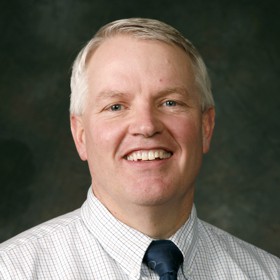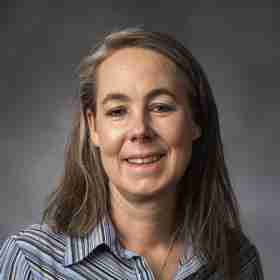The BYU astronomy research group is part of the Department of Physics and Astronomy in the College of Physical and Mathematical Sciences. The group currently consists of 6 full-time faculty members, a planetarium director, a part-time instructor, 4 graduate students, 108 declared undergraduate majors, and 16 astronomy minors. We currently operate 10 optical telescopes that range from 6" to 0.91-m, at three different locations in Utah. In addition, we joined the Astrophysical Research Consortium (ARC) in January 2021 to provide guaranteed access to a 3.5-m telescope.
Members of the group also make use of wide variety of external telescopes such as the Hubble Space Telescope and the ALMA array. Please follow the links below to explore the activities of the research group, opportunities for graduate studies, and use of the our telescopes.
We note that there are other faculty in the department who work on astronomy/astrophysics problems. On the general department page please find David Neilsen, Eric Hirschmann, Chris Verhaaren, and David Allred. Jani Radebaugh of the geology department works in the area of planetary science.
Research Opportunities

- Supermassive Black Hole Mass Measurement
The improved sensitivity and larger baselines of the Atacama Large Millimeter/submillimeter Array (ALMA) now enable imaging of molecular gas deep within the centers of numerous nearby galaxies. In a small percentage of luminous elliptical galaxies, ALMA observations trace the motion of molecules like carbon monoxide (CO) well within the supermassive black hole's (BHs) sphere of influence, wherein the BH dominates the overall gravitational potential. Using detailed gas-dynamical models, we are able to measure the BH mass and determine its overall error budget.
I am currently looking for additional students to work on this project.
- Dust Attenuation in Circumnuclear Disks
Roughly 10% of all elliptical and S0-type galaxies contain morphologically round dusty disks that obscure stellar light behind these disks. These molecular gas-rich disks are prime candidates for precision mass measurement of the supermassive black hole (BH) at the disk centers. Unfortunately, the high dust column densities preclude any confident determination of the host galaxy mass profile simply by modeling the observed stellar light distribution in optical (and often even near-IR) images. Using a large sample of multi-wavelength data obtained with the Hubble Space Telescope (HST), we are modeling the dust attenuation of these circumnuclear disks to recover a range of plausible dust-corrected stellar mass models. These will be used to more confidently constrain BH masses in about 30 elliptical and S0 galaxies.
I am currently not looking for additional students to work on this project.
- Building an Atlas of Molecular Gas Kinematics From the ALMA Archive
Archival data from the Atacama Large Millimeter/submillimeter Array (ALMA) reveal molecular gas in many early-type galaxies (ETGs, including elliptical and S0 types). In many cases, the observations trace regular rotation about the galaxy center. However, relatively few of these data sets have been published, and there is little consistency between the published data products. We are uniformly measuring gas properties in a large sample of ETGs with ALMA carbon monoxide (CO) observations, which will then be compiled into an atlas of molecular gas kinematics in luminous galaxies. In addition to measuring and analyzing kinematic properties, this atlas will also help identify candidates for higher angular resolution ALMA imaging to measure the mass of the central supermassive black hole mass.
I am currently not looking for additional students to work on this project.
- Dust Properties From ALMA Observations
Cold dust found at the centers of many nearby galaxies emits thermal radiation. With typical temperatures of 10-30 K, the dust black body spectrum peaks in the far-IR range. In many cases, the Rayleigh-Jeans tail of the dust thermal emission is detectable at mm-wavelengths with the Atacama Large Millimeter/submillimeter Array (ALMA). Together with continuum measurements from the radio to the mid-IR, data points at ALMA wavelengths are important when measuring dust mass and temperature. We are measuring ALMA continuum flux densities (or upper limits) and building spectral energy distributions (SEDs) to separate out non-thermal contributions and model the SEDs as using a modified black body function.
I am currently not looking for additional students to work on this project.
- Monitoring AGN Variability Using West Mountain Observatory
Active galactic nuclei (AGN) are electromagnetic phenomenon arising from material accreting onto supermassive black holes (BHs). Certain types of AGN called blazars display high levels of variability over timescales of minutes to years. Blazars are thought to be AGN seen down the jet that launches from directly about the BH. Using a rich data set of several blazars taken with our own West Mountain Observatory spanning about a decade, we aim to better characterize both long timescale and intra-night variability. This project will use both differential (aperture) photometry and, when possible, difference imaging to build detailed light curves. We will also explore possible systematic effects that impact our final light curve error budgets and more fully capture the inherent uncertainties in aperture photometry.
I am currently looking for students to work on this project.
- Reverberation Mapping in Active Galactic Nuclei
Active galactic nuclei (AGN) manifest a range of phenomenon in X-ray to radio wavelengths, from active accretion of material into a thermally hot disk about the central supermassive black hole (BH) to ionization of clouds at light-day distances to massive jets of material that produce significant radio emission. In this project, we seek to better understand the connection between brightening and dimming of thermal energy from the accretion disk and the strength of emission lines from ionized gas clouds in what is called the broad line region (BLR). As the accretion disk light produces the light that ionizes the surrounding gas clouds, changes in accretion-disk luminosity reverberate throughout the region, resulting in a time delay between AGN and BLR light curves. In collaboration with researchers at the University of Wyoming, we will employ optical imaging and spectroscopy as well as near-IR spectroscopy to map the response of a variety of BLR emission lines to the driving continuum.
I am currently looking for additional students to work on this project.

- Period Changes in Medium Amplitude delta Scuti Variables
In general, researchers consider there to be two groups of delta Scuti variables; the High Amplitude delta Scuti (HADS) and the Low Amplitude delta Scuti (LADS). However, the in between realm is interesting. The Medium Amplitide delta Scuti stars seems to show a range of changes in both amplitude and period. This makes them a very interesting group to monitor.
We are now adding some computer modeling to try to better understand these changes.
This is a place where there is always need for additional help. We will have 6 robotic telescopes running on every clear night by the summer of 2022. That means a lot of data to process and light curves to be determined.
- Variable Star Search in Open Clusters
We are currently searching for new low amplitude variable stars in a large sample of open clusters. The clusters cover a wide range of ages and will provide a evolutionary test of how the variable stars change with age. We are also looking for very small eclipses that might be the sign of a planet.
- Spectroscopic Survey of Northern Sky delta Scuti Variables
To understand the nature of the delta Scuti variables in the instability strip one needs as much information as possible about the stars. However, an examination of the catalog of delta Scuti variables shows a lack of basic information on many of the group. Of the 247 delta Scuti stars visible in the northern hemisphere we currently have spectra of 242 of them. These need to be reduced to provide estimates of some basic stellar properties like [Fe/H], radial velocity, rotational velocity, and perhaps information on any binary companions.
- Spectrophotometic Comparison of H-alpha and H-beta Index
Traditionally the H-beta index has been used as a reddening free index to measure the surface temperature of stars. Prof. Joner in the department has developed a new H-alpha index that has great promise. We are working together to spectrophotometrically compare the two systems and the application of the system to a number of different types of objects.
- Astronomy Education
I'm currently working on a project to develop a High School research competition based on pulsating variable stars. This is funded by a NASA Rocky Mountain Space Grant Consortium Mini Grant. We will provide variable star data to a number of high school teams that will then analyze the data and provide a final report that will be judged.
- Matching Model Stellar Atmosphere Models to Near-IR spectra of Pulsating Stars
The Near-IR is an area that hasn't been extensively explored for pulsating variable stars. We are obtaining NIR spectra of the stars of the instability strip (Cepheids, RR Lyrae, delta Scuti, etc.) to study a number of different issues. This includes looking for cool companion stars, molecular banding structures, line-profile changes over pulsation phases. Some of these could be related to the Hubble Tension issue.
- Impact of CO Bands in Cepheids on the Hubble Tension
We are exploring the changes of Carbon-Monoxide molecular bands over the pulsation cycle of Cepheids variables. The growth of these bands could have an impact on the Hubble Tension. This is done in the Near-IR with the ARC 3.5-m telescope. This allows complete coverage of the phase curve, which is not possible in the Mid-IR (MIR) with systems like the JWST.
- Light Curve Generation for Transiting Planets, Eclipsing Binaries, and Pulsating Variables
We have developed a number of robotic telescope systems on the observation deck of the Eyring Science Center. These range from 6" and 24". Most of the systems are currently capable of working the entire night robotically. We observe transiting planets, eclipsing binary systems, pulsating variables, and other systems that change in brightness. In some cases we really want to process the data as soon as possible to get the data sent to programs like the NASA TESS transit finding program. With the amount of data generated we just need help in processing the data. If someone were to work on this program they would get experience over a wide range of objects.
Always looking for new research students on these projects.

- Photometric Reverberation MappingTraditional reverberation mapping to estimate AGN black hole masses uses a combination of photometry and spectroscopy to determine the time lag between variations that occur at the accretion disk and then later in the broad line region. With such techniques, there is a need for a large amount of moderate to large telescope time in order to secure the spectroscopic data with an observing cadence suitable for a determination of the time lag. Photometric reverberation mapping uses a single epoch spectroscopic determination of the broad line region velocity and a time lag determination based on photometric observations that include predominantly continuum features or broad line components that can be seen to vary at a later time. This technique is still being tested but hold promise for the determination of black hole masses in the age of several large scale surveys.

- Testing the standard model of active galactic nuclei through automated multi-color broadband CCD imagingRemote Observatory for Variable Object Research is a 16" RC Optical telescope on a Paramount pier sited near Delta Utah. Operational since 2008, it is used to remotely monitor active galactic nuclei (AGNs) which includes blazars, quasars, Seyfert nuclei and Low Ionization Nuclear Emission Regions, or LINERS. The standard model of AGNs assumes each is a supermassive black hole surrounded by an accretion disk. The disk is fed by a more extensive lower-density region surrounding it. The disk brightens and dims as gas falls upon it and as dusty clouds orbiting around it obscure it from our view. Optical variability measures these effects providing data that can be used to model the specific nature of different AGNs.

- Study of Galactic Cirrus
Join our research group to explore the mysterious Galactic cirrus—the faint, wispy clouds of interstellar dust illuminated by stars in the plane of our Galaxy or close to it, playing a crucial role in understanding the interstellar medium (ISM). By studying these clouds, you will help uncover the properties of dust grains, such as their temperature, reflectivity, and size, and distinguish them from extragalactic phenomena, enhancing the accuracy of detection and classification tasks. Leveraging ongoing and upcoming deep sky surveys like DESI Legacy, HSC-SSP, LSST, and the Roman Space Telescope, our project aims to map these clouds in unprecedented detail. With initial results already providing valuable insights, we plan to further investigate Galactic cirrus using ultradeep sky surveys and cutting-edge AI technologies, including a neural network specifically designed to identify these clouds. This is a fantastic opportunity to contribute to groundbreaking research that not only advances our understanding of the ISM but also helps in extragalactic studies. If you’re passionate about the physics of the ISM and excited by the potential of AI in astrophysics, we invite you to join us!
- Study of Extremely Distant Galaxies
Are you fascinated by the mysteries of the early Universe? Join our research group to explore the properties of spiral galaxies that formed less than a billion years after the Big Bang using the James Webb Space Telescope (JWST). Our project leverages JWST's unprecedented near-infrared and mid-infrared observations to study the structure of extremely distant, young galaxies—structures that are too faint to be resolved by other telescopes. Spiral arms, for example, are crucial regions of star formation and play a significant role in galaxy evolution, yet their formation mechanisms are not fully understood. Initial findings have already challenged current models of galaxy evolution, revealing young, luminous galaxies that shouldn't exist. Building on this foundation, we aim to uncover the physical conditions that shaped these early spiral galaxies, providing new insights into the Universe's history and the development of its diverse galactic populations. If you are excited about pioneering research at the forefront of astrophysics and want to be part of a project that pushes the boundaries of our understanding, we invite you to join us on this ambitious journey!
- Study of the Dust Distribution in Galaxies
Join our research group to refine our understanding of dust distribution in galaxies, including the Milky Way! Dust in the interstellar medium is crucial for many astrophysical processes, such as star formation, where it helps cool and collapse gas clouds into new stars. In this ambitious project, we will explore the 3D distribution of dust in a large sample of edge-on galaxies, viewed similarly to how we see the Milky Way. This unique perspective allows us to study the vertical distribution of dust along the galactic plane. Building on methods we've successfully applied to a handful of galaxies, we are expanding this research using the supercomputer at BYU to conduct the most comprehensive study of dust distribution to date. Additionally, we will improve our maps of dust distribution in the Milky Way at high Galactic latitudes using the latest observations. Our previous maps, recognized as some of the most precise, have set a strong foundation for this work. By joining this project, you'll be part of groundbreaking research that will enhance our understanding of galactic structures and evolution, with significant implications for both galactic and extragalactic astronomy. If you're passionate about the physics of dust and eager to make a substantial impact, we invite you to be a part of our team!
- Study of Polar-ring Galaxies
Join our research group to study the intriguing world of polar-ring galaxies, unique cosmic structures that serve as natural laboratories for exploring the mysteries of dark matter and galaxy formation. A polar-ring galaxy features a ring of gas, dust, and stars orbiting perpendicular to its main body, offering insights into matter accretion and the shape of the dark matter halo—a key component that influences galaxy rotation and formation. Our recent findings suggest that these galaxies are more common than previously thought, opening the door to a comprehensive study of their properties. By leveraging neural networks and deep sky surveys, we aim to identify thousands of polar-ring galaxies, greatly expanding the current known sample. This project is already underway with the help of my graduate and undergraduate students, and we invite new students to participate, providing a unique opportunity to engage with cutting-edge research. This work will not only deepen our understanding of galaxy evolution but also contribute to the broader effort to unravel the nature of dark matter, offering valuable constraints that can refine existing models and theories. If you are eager to explore these cosmic mysteries and gain hands-on experience in astrophysical research, we welcome you to join our group!
- Twins of the Milky Way Galaxy
Join our research group to search for the twins of our Milky Way galaxy using modern deep sky surveys! This project is crucial for gaining insights into the formation and evolution of spiral galaxies, including the processes that have shaped the Milky Way over billions of years. By identifying galaxies that closely resemble our own, we aim to better understand the dynamics, structure, and star formation history characteristic of the Milky Way. Utilizing data from ongoing and upcoming surveys like DESI Legacy, HSC-SSP, LSST, and the Roman Space Telescope, we will identify and analyze galaxies with similar properties to our own. A recent pilot study, conducted by my former undergraduate student, compared the Milky Way with ~6,000 edge-on galaxies. In our next phase, we will expand this comparison to ~100,000 edge-on galaxies using advanced analyses and a specially trained neural network. This research will place our Galaxy in a broader cosmic context, revealing patterns and differences that highlight the environmental factors and internal processes shaping galactic development. If you're excited about exploring our Galaxy and how it compares with other galaxies, we invite you to join us!
- The Use of Cosmological Simulations of the Universe
Join our research group to explore the Universe by comparing real galaxies observed in deep sky surveys with galaxies modeled through cutting-edge cosmological hydrodynamical simulations! These simulations use the laws of physics to model the formation and evolution of galaxies over billions of years, incorporating effects like gravity, gas dynamics, and star formation. This project is crucial for testing and refining our theoretical models by comparing them with actual observations, allowing us to identify similarities and discrepancies that improve our understanding of the fundamental processes shaping galaxies. Through this work, we aim to determine how well our current theories match reality, guiding future improvements in the models and leading to a more accurate picture of the Universe’s history and evolution. If you are passionate about galaxy modeling and want to contribute to the forefront of scientific discovery, we invite you to join our team and be part of a project that bridges the gap between theory and observation!
- Archeoastronomy
Join our research group as we collaborate with the Archaeological Research Institute (ARI) on an exciting project that merges astronomy with archaeology! We are working alongside Richard Hauck to co-author publications in archeoastronomy, drawing on nearly forty years of ARI's extensive fieldwork. Our research will cover ancient astronomical observatories on the Colorado Plateau and recent findings from Khor Kharfot in eastern Arabia. These manuscripts, which document and analyze archaeological sites with lunisolar and stellar orientations, represent decades of detailed research using computerized data techniques from the late 20th century. Our goal is to preserve and publish these valuable findings, ensuring that this knowledge is accessible to scholars and not lost in archives. This collaboration holds immense potential to unveil fascinating insights into ancient cultures, religions, and their advanced understanding of the stars. If you are intrigued by the intersection of astronomy, archaeology, history, and religion, we invite you to join us in this unique and enriching project!
- Developing New Astronomical Software
Join our research group to contribute to the development and enhancement of essential Python tools for the astronomical community! We are currently updating the IMAN Python package, widely used for data reduction and analysis of galaxies. This updated package will empower researchers in extragalactic astronomy to handle vast amounts of data more efficiently, driving more accurate and impactful scientific discoveries. By joining our team, you'll help refine this powerful tool to support the astronomical community by enhancing data analysis. If you’re passionate about coding, astronomy, and making a difference in the field, we invite you to be part of our team!
- Study of the Low-surface Brightness Universe
Join our research group to explore the low-surface brightness Universe using the upcoming Vera Rubin Telescope (LSST), which is set to revolutionize our understanding of the faint cosmos. As the most ambitious project in our group, this study will utilize LSST’s unparalleled sensitivity and the world’s largest camera to detect extremely faint structures that ordinary observations miss. Our research will focus on groundbreaking investigations, including studying tidal interactions of galaxies, examining galaxy groups and clusters, and exploring low-surface brightness and ultra-diffuse galaxies. These observations will deepen our understanding of galaxy interactions, the distribution of matter and dark matter, and the evolution of the Universe over time. By illuminating the "dark side" of the Universe, this project will provide new insights into the mechanisms shaping cosmic structures. If you're eager to be part of cutting-edge research that pushes the boundaries of our knowledge, we invite you to join us in this exciting journey and contribute to advancing our understanding of the Universe's hidden depths!

- Studying the Architectures of Exoplanetary Systems
Like our Sun, other stars are known to host planetary systems. As we continued to discover many more exoplanetary systems, we learn about how these systems are put together. The "architecture" of these systems (are small planets on the inside or outside? how close are the planets to each other? etc.) gives us invaluable clues to the formation of planetary systems. I used state-of-the-art statistical and computational techniques to discover new exoplanetary systems, study existing systems, and remove the biases on their properties from our limited observational methods. There are a variety of projects available at a variety of levels and you'll be paid as Research Assistants. Please contact me for more information. The best time to contact me about available positions is about 1 month before the beginning of a semester.
- Orbits in the Outer Solar System
(No positions open until Fall 2023.) Beyond the orbit of Neptune lies a population of icy bodies whose orbits can reveal unique information about how our solar system formed. This region of the solar system is called the Kuiper Belt and these small icy bodies are called Kuiper Belt Objects (KBOs or sometimes Trans-Neptunian Objects or TNOs), though some are large enough to also qualify as "dwarf planets" like Pluto and Haumea. There are multiple projects available in my research group to study KBO satellites (e.g., Haumea's moons) and KBO orbits (e.g., the Haumea and other collisional families). There are a variety of projects available at a variety of levels and you'll be paid as Research Assistants. Please contact me for more information. The best time to contact me about available positions is about 1 month before the beginning of a semester.

- Infrared Spectra and Photometry of Brown Dwarfs - Fitting to Models
- Use IDL to reduce spectra of brown dwarfs taken with Triplespec on the ARC 3.5 meter telescope.
- Use astropy tools to reduce photometry taken with NICFPS on the ARC 3.5 meter.
- Reduce JWST spectra with existing python tools.
- Write python codes to reduce data, create theoretical models, and fit the models to the data in order to do higher order data analysis.
- Transiting Exoplanets
Take data with the 24" telescope on the roof of the Eyring Science Center of stars that may have transiting planets. Reduce this data using astropy and AstroimageJ software. Characterize the radius of the planet (if we see a transit) by fitting the transit light curve. Return results to the team so that we can either obtain further observations of a possible planet candidate or expire the target as spurious or an eclipsing binary star system.